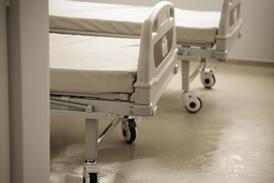If the UK is to maintain its efficiency gains while strengthening the resilience of the NHS it must integrate and innovate across health and care, writes Dr Layla McCay
The European Observatory on Health Systems and Policies recently released its biennial report on the state of health and care in the European Union. It might end up being the UK’s final appearance in this EU-funded report.
On the surface, the UK performs well in a number of areas compared with our European partners and rarely performs below the EU average.
As a percentage of the overall health spend, we allocate the most to preventative service across the entire EU (5 per cent compared with an average of 3 per cent). Our diversification in the roles and responsibilities across the workforce used to deliver care is recognised for the potential for greater efficiency.
And the report recognises our health system is achieving consistently lower costs, particularly associated with pharmaceutical use through our extensive use of generic medicines.
’Low doctor, low-nurse’
It also highlights the main challenges affecting our system. While there is of course geographical variation across the UK, our numbers of doctors and nurses per head are significantly lower than the EU average; in the whole EU, only Poland has fewer of both. And looking at the trends for nursing in particular, numbers are increasing across the EU as a whole, but in the UK have been in decline, falling from 9.2 per 1,000 in 2005 to 7.8 per 1,000 in 2017.
The report recognises the challenges for the UK that are associated with being in the comparatively ”low doctor, low nurse” category, particularly in two key areas. First, despite the universality and equity of the NHS, we are seeing trends in reduced access to care, with the percentage of patients reporting unmet needs rising since 2008 to 3 per cent of the population, 90 per cent of which are attributable to longer waiting times.
Second is the resilience of the system: reduced staffing, combined with lower numbers of hospital beds (2.5 per 1,000 compared with an EU average of 5 per 1,000), mean today’s efficiency could become tomorrow’s challenge in case of unexpectedly increasing need, the UK is currently only second to Ireland when it comes to bed occupancy rates, with an estimated occupancy of 84.3 per cent.
The challenges posed to the health system by the unsustainability of the social care workforce further threatens the resilience of a health system already working at maximum efficiency to support an ageing population living with increasingly complex needs.
Our quality of acute care is considered to be above the EU average. But despite investing more in prevention than other EU countries, our preventable and treatable mortality rates are not quite keeping up with other high-income EU countries, such as Sweden and the Netherlands.
The challenges posed to the health system by the unsustainability of the social care workforce further threatens the resilience of a health system
There are no big surprises in this new international data, but it matters to understand how the NHS is performing compared with the health systems of other countries, particularly those with similarities in wealth and approaches.
The ambitions of the long-term plan recognise these challenges identified by the European Observatory data and commits to addressing them through the integration of services and greater investments in the workforce, prevention and the opportunities posed by innovation in areas like digital health.
These are not challenges that can be solved by any one organisation; if the UK is to maintain our efficiency gains while strengthening our health service resilience, including integration and innovation across the sectors to reach the wider determinants of health in this country, may hold one of the answers.
































1 Readers' comment